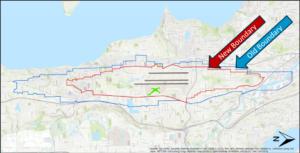Discussion:
Currently, FAA law has extremely complicated rules for establishing a noise boundary around airports. (A noise boundary is a geographic area inside which there is a certain acceptable noise level.) This is referred to as the DNL65. and it has several major flaws. The FAA Reauthorization Act Of 2018 attempted to address these flaws in several ways. This letter, from a caucus of Congressmen engaged on airport community issues complains to the Administrator that the spirit of the law is not being adhered to and demands that he make attempts to put his agency into compliance.
The language is fairly technical, however there are a couple of basic points they raise: First, that the noise boundary be determined by actual noise measurements (currently the noise boundaries are 'modeled' and those calculations often do not reflect in any way the lived experience for residents.) Second, that the 'acceptable' noise level of sixty five decibels (hence DNL65) has been determined to be far too high to conform with current understandings of healthy living.
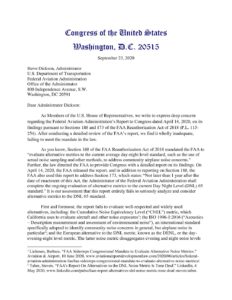 Currently, FAA law has extremely complicated rules for establishing a noise boundary around airports. (A noise boundary is a geographic area inside which there is ...
Currently, FAA law has extremely complicated rules for establishing a noise boundary around airports. (A noise boundary is a geographic area inside which there is ...
There is a geographic area around every large airport where, according to a formula developed by the Federal Aviation Administration (FAA), the ‘noise’ level is equal to or greater than 65 decibels DNL (Day Night Level). That area is depicted on a noise exposure map (NEM) and referred to as the Noise Boundary or just
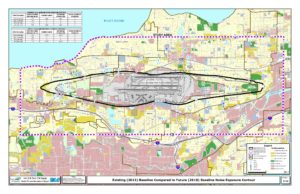 From the Part 150 Study (2013) by Landrum & Brown...
From the Part 150 Study (2013) by Landrum & Brown...
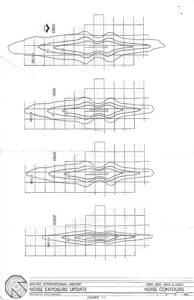 From the 1981 Noise Exposure Update...
From the 1981 Noise Exposure Update...
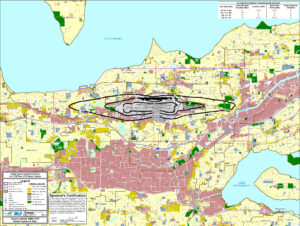
 Currently, FAA law has extremely complicated rules for establishing a noise boundary around airports. (A noise boundary is a geographic area inside which there is ...
Currently, FAA law has extremely complicated rules for establishing a noise boundary around airports. (A noise boundary is a geographic area inside which there is ... From the Part 150 Study (2013) by Landrum & Brown...
From the Part 150 Study (2013) by Landrum & Brown... From the 1981 Noise Exposure Update...
From the 1981 Noise Exposure Update...